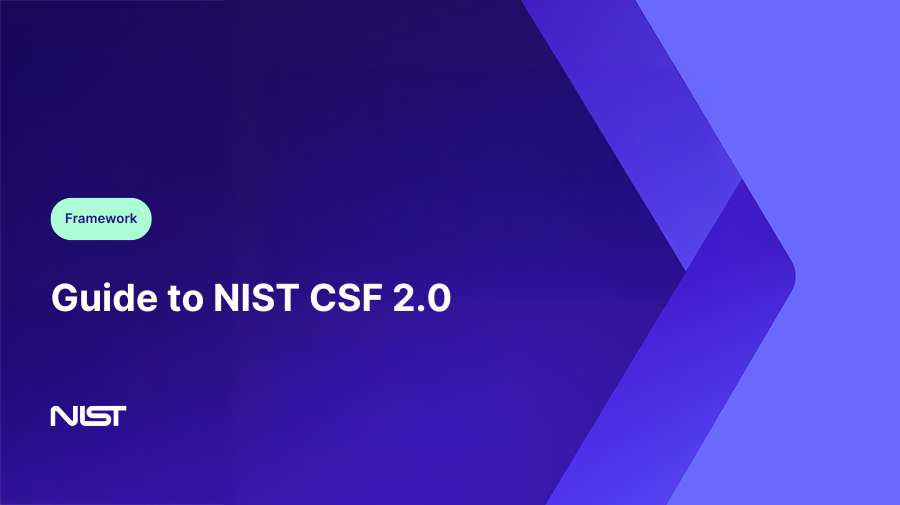Set direction and accountability
Policies, roles, oversight, and risk appetite.
Define leadership responsibilities, resource planning, and performance metrics that align cyber objectives with business goals.

The NIST Cybersecurity Framework (CSF) 2.0 reflects a decade of adoption across industries. It revises the original model to meet current realities of cloud infrastructure, AI-based systems, and global supply chains. The new framework continues to be flexible and risk-based.
As an organization, whether you are starting from the beginning or modifying something useful, this guide will discuss the main features of NIST CSF 2.0 and how organizations can connect it with other standards, such as ISO 27001.
The NIST Cybersecurity Framework (CSF) provides a structured, outcome-based approach for supporting the management and reduction of cybersecurity risk and is maintained by the National Institute of Standards and Technology.
Version 2.0, released in early 2024, is no longer limited to just critical infrastructure but applies to all industries and all organizations, regardless of size. The new version builds on the previous version with updated language, greater integration with governance, and clearer connections to privacy and supply-chain risk management.
This six-function model reflects the lifecycle of risk management, emphasizing governance and adaptability as ongoing processes rather than one-time efforts.
NIST CSF 2.0 uses Profiles and Tiers to help organizations tailor their implementation according to their maturity and risk appetite.
Most organizations aim for Tier 3 maturity before advancing to adaptive or automated programs.
The CSF (cybersecurity framework) has emerged as the accepted global baseline for cybersecurity. It is recognized across sectors (finance, healthcare, government contracting, critical infrastructure) by regulators, supply-chain partners, and auditors.
For organizations already managing ISO or SOC programs, CSF 2.0 is your pathway between risk and resilience; connecting your controls to regulatory and customer outcomes.
Organizations pursuing dual alignment can reuse evidence across both frameworks, significantly reducing audit fatigue and duplication.
NIST CSF 2.0 provides a flexible, scalable foundation for cybersecurity resilience.
It helps organizations move from compliance checklists to adaptive, outcome-driven risk management.
With Complyance, you can automate control mapping, monitor continuous compliance, and visualize CSF maturity in real time; turning framework adoption into measurable progress.
Start by building your NIST CSF Profile with Complyance. Book a demo and see how automation and AI-driven insights can streamline risk tracking and control monitoring.
Is NIST CSF mandatory? No. It’s a voluntary framework, but it’s widely referenced in contracts, regulations, and government procurement.
How does NIST CSF 2.0 differ from 1.1? The new version adds the Govern function, clarifies roles, and updates references to modern technologies such as AI and supply-chain dependencies.
How often should a CSF Profile be updated? At least annually or after any major business, regulatory, or threat landscape change.
Can NIST CSF be audited? While not formally certifiable, organizations can conduct independent assessments or align with frameworks like ISO 27001 for certification.
